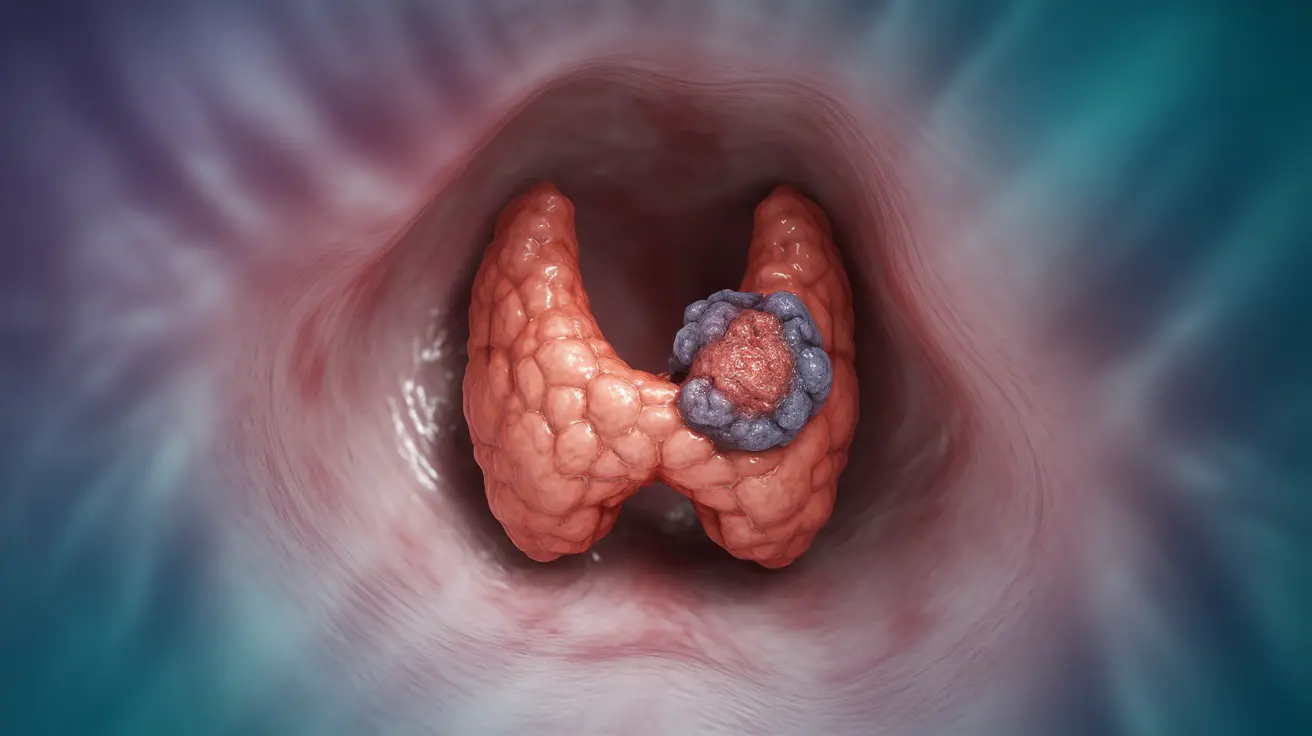Hurthle cell thyroid cancer is a rare and distinct form of thyroid cancer that requires careful attention and specialized medical care. This unique variant of follicular thyroid cancer presents specific challenges for both diagnosis and treatment, making it essential to understand its characteristics and progression patterns.
For individuals diagnosed with or concerned about Hurthle cell thyroid cancer, understanding how fast it grows and recognizing early warning signs can make a significant difference in treatment outcomes. Let's explore the key aspects of this condition, from its growth patterns to treatment options.
Growth Patterns and Progression
Hurthle cell thyroid cancer typically grows at a moderate rate compared to other thyroid cancers. However, several factors can influence its growth rate:
- Age of the patient
- Size of the tumor at diagnosis
- Genetic factors
- Presence of certain molecular markers
- Overall health status
The cancer's growth pattern can vary significantly among individuals, with some cases progressing slowly over years while others may show more aggressive behavior. Regular monitoring is essential for tracking any changes in growth rate.
Early Warning Signs and Symptoms
Recognizing early symptoms is crucial for timely intervention. Common signs include:
- A noticeable lump or nodule in the neck
- Difficulty swallowing
- Voice changes or hoarseness
- Neck pain or discomfort
- Enlarged lymph nodes
These symptoms may develop gradually, and some patients might not experience noticeable signs in the early stages. This makes regular medical check-ups particularly important for at-risk individuals.
Diagnostic Process
Accurate diagnosis of Hurthle cell thyroid cancer involves several specialized tests:
- Fine-needle aspiration biopsy
- Ultrasound imaging
- Molecular testing
- CT or MRI scans
- Blood tests for thyroid function
These diagnostic tools help healthcare providers distinguish Hurthle cell cancer from other thyroid conditions and determine the extent of the disease.
Treatment Approaches
Treatment strategies typically involve:
Primary Treatment Options
- Total thyroidectomy (surgical removal of the thyroid)
- Radioactive iodine therapy
- Thyroid hormone replacement therapy
Advanced Treatment Considerations
- Targeted therapy for specific cases
- Clinical trials for new treatment methods
- Regular monitoring and follow-up care
The effectiveness of treatment often depends on early detection and appropriate intervention strategies tailored to each patient's specific case.
Long-term Outlook and Prognosis
The prognosis for Hurthle cell thyroid cancer varies based on several factors:
- Stage at diagnosis
- Completeness of surgical removal
- Patient's age and overall health
- Response to treatment
- Presence of metastasis
With appropriate treatment and regular follow-up care, many patients experience favorable outcomes, especially when the cancer is detected early.
Frequently Asked Questions
How fast does Hurthle cell thyroid cancer typically grow, and what factors make it grow faster or become more aggressive?
The growth rate varies from slow to moderate, with factors such as age, tumor size, and genetic characteristics influencing progression. Certain molecular markers and the patient's overall health status can affect how aggressive the cancer becomes.What are the early warning signs and symptoms of Hurthle cell cancer that I should watch for?
Key warning signs include a visible neck lump, swallowing difficulties, voice changes, neck pain, and enlarged lymph nodes. These symptoms may develop gradually and require prompt medical evaluation.How is Hurthle cell thyroid cancer diagnosed, and what tests are used to tell it apart from other types of thyroid cancer?
Diagnosis involves multiple tests, including fine-needle aspiration biopsy, ultrasound imaging, molecular testing, and comprehensive blood work. These tests help differentiate Hurthle cell cancer from other thyroid conditions.What are the best treatment options for Hurthle cell cancer, and how effective is surgery in stopping the cancer from coming back?
The primary treatment is typically total thyroidectomy, often followed by radioactive iodine therapy. Surgery's effectiveness in preventing recurrence depends on complete tumor removal and appropriate follow-up care.What is the long-term outlook for someone diagnosed with Hurthle cell cancer, and which factors are linked to better or worse survival?
The long-term outlook varies based on factors such as early detection, complete surgical removal, age at diagnosis, and response to treatment. Regular monitoring and adherence to treatment plans significantly improve survival rates.




